Do you have a question about the Philips 32PFL4909 and is the answer not in the manual?
Setting up a wireless network connection for the TV.
Verifying the network connection status.
Choosing the desired wireless network from available options.
Adjusts the picture size on the TV screen.
Opens the main on-screen menu.
Displays information about the current program.
Displays applicable menu items for the screen or object.
Selects connected devices.
Accesses the Net TV menu directly.
Receives signals from the remote control.
Adjusts screen brightness based on ambient light.
Indicates the TV's power status.
Controls the audio volume level.
Navigates through TV channels.
Accesses the primary on-screen menu.
Chooses between connected input devices.
Powers the television on or puts it in standby.
Guides users through the initial TV setup process.
Explains the E-sticker display when 'Retail' location is selected.
Connects Blu-ray, DVD, Home Theater, PC, Gaming Console, Camera, Tablet.
Connects Blu-ray, DVD, Home Theater, Gaming Console using Audio/Component Video.
Connects DVD, Home Theater, VCR, Gaming Console using Audio/Video cables.
Used only for USB Memory Stick connection.
Output for connecting to home theater or digital audio systems.
Connects a PC using a VGA cable.
Input jacks for Component and Composite video signals.
Connects antenna, cable, or satellite box.
Audio output jack for headphones.
Input jacks for HDMI devices.
Input jacks for analog audio signals.
Setting up a wireless network connection for the TV.
Verifying the network connection status.
Choosing the desired wireless network from available options.
Adjusts the picture size on the TV screen.
Opens the main on-screen menu.
Displays information about the current program.
Displays applicable menu items for the screen or object.
Selects connected devices.
Accesses the Net TV menu directly.
Receives signals from the remote control.
Adjusts screen brightness based on ambient light.
Indicates the TV's power status.
Controls the audio volume level.
Navigates through TV channels.
Accesses the primary on-screen menu.
Chooses between connected input devices.
Powers the television on or puts it in standby.
Guides users through the initial TV setup process.
Explains the E-sticker display when 'Retail' location is selected.
Connects Blu-ray, DVD, Home Theater, PC, Gaming Console, Camera, Tablet.
Connects Blu-ray, DVD, Home Theater, Gaming Console using Audio/Component Video.
Connects DVD, Home Theater, VCR, Gaming Console using Audio/Video cables.
Used only for USB Memory Stick connection.
Output for connecting to home theater or digital audio systems.
Connects a PC using a VGA cable.
Input jacks for Component and Composite video signals.
Connects antenna, cable, or satellite box.
Audio output jack for headphones.
Input jacks for HDMI devices.
Input jacks for analog audio signals.
| Comb filter | 3D |
|---|---|
| Screen shape | Flat |
| Response time | 8 ms |
| Display diagonal | 32 \ |
| Display brightness | 270 cd/m² |
| Display resolution | 1366 x 768 pixels |
| Native aspect ratio | 16:9 |
| LED backlighting type | - |
| Supported video modes | 1080i, 1080p, 480i, 480p, 720p |
| Contrast ratio (typical) | 1200:1 |
| Display diagonal (metric) | 81 cm |
| Screen format adjustments | 4:3, 14:9, 16:9, Auto, Zoom |
| Supported graphics resolutions | 720 x 480, 1024 x 768 (XGA), 1280 x 1024 (SXGA), 1280 x 768 (WXGA), 1360 x 768 (WXGA), 1400 x 1050 (SXGA+), 1440 x 900 (WXGA+), 1680 x 1050 (WSXGA+), 1920 x 1080 (HD 1080), 640 x 480 (VGA), 800 x 600 (SVGA) |
| Motion interpolation technology | PMR (Perfect Motion Rate) 120 Hz |
| Equalizer | Yes |
| Audio decoders | Dolby Digital, DTS, Dolby Digital AC3, DTS TruSurround |
| RMS rated power | 8 W |
| Number of speakers | 2 |
| Equalizer bands quantity | 5 |
| AC input voltage | 120 V |
| AC input frequency | 60 Hz |
| Power consumption (standby) | 0.5 W |
| Power consumption (typical) | 50 W |
| Audio formats supported | MP3 |
| Image formats supported | JPG |
| Video formats supported | AVC, H.264, MPEG1, MPEG2, MPEG4 |
| Supported TV bands | UHF, VHF |
| Analog signal format system | NTSC |
| Digital signal format system | ATSC |
| Music apps | Pandora |
| Video apps | Netflix, YouTube |
| HDMI ports quantity | 3 |
| DVI-D ports quantity | 0 |
| USB 2.0 ports quantity | 1 |
| Product color | Black |
| Panel mounting interface | 100 x 100 mm |
| Package depth | 163 mm |
| Package width | 846 mm |
| Package height | 523 mm |
| Package weight | 7450 g |
| Operating temperature (T-T) | 5 - 40 °C |
| Cables included | AC |
| Depth (with stand) | 188 mm |
|---|---|
| Height (with stand) | 493 mm |
| Weight (with stand) | 6120 g |
| Depth (without stand) | 99.1 mm |
| Width (without stand) | 734 mm |
| Height (without stand) | 447 mm |
| Weight (without stand) | 5380 g |
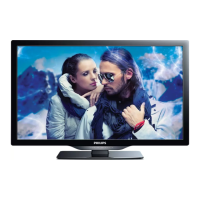

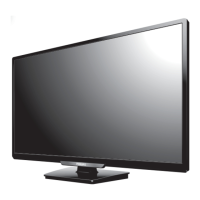
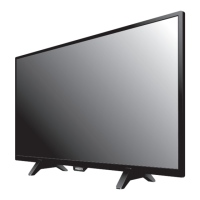

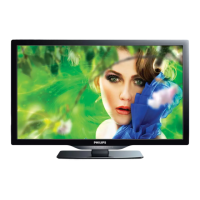


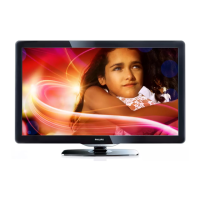



